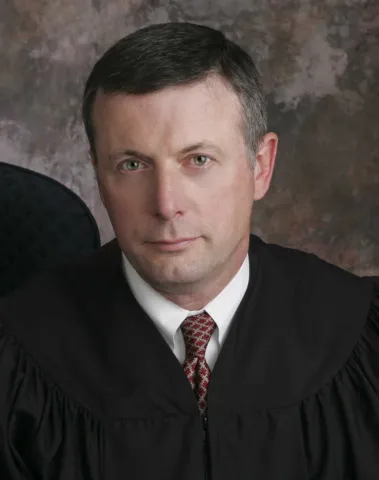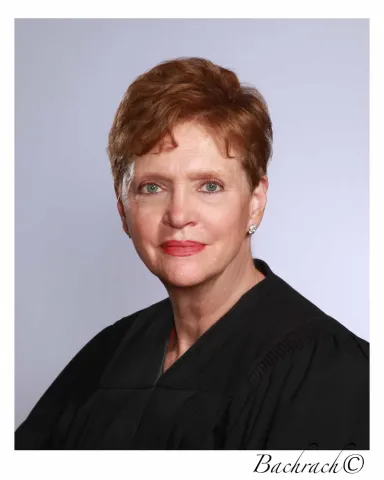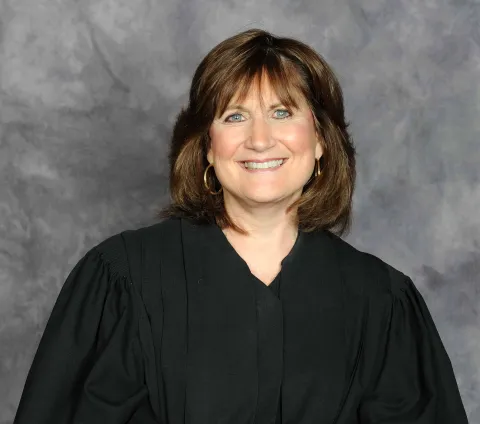As the federal courts have gradually resumed operations with new pandemic-era health and safety rules in place, one aspect of the courts’ mission is on a fast track: the resumption of grand jury proceedings.
As of October, all but a few of the 94 U.S. district courts had returned to the use of grand juries – the groups of citizens who meet behind closed doors to judge the strength of a prosecutor’s evidence.
The courts are taking great precautions to protect the health and safety of grand jurors and prospective jurors during the ongoing COVID-19 pandemic. At the same time, they must be mindful of citizens’ constitutional right to a speedy trial and cognizant of the statute of limitations for filing charges against an individual, typically about five years from the time of the offense.

New Mexico District Chief Judge William P. Johnson
The New Mexico District Court along the southern border has a particularly heavy criminal caseload, driven by immigration, smuggling, and drug trafficking offenses. There are three detention facilities serving its Albuquerque courthouse and five feeding into its Las Cruces courthouse. In addition to concerns over case backlog, any slowdown in grand jury operations risked keeping defendants in unsafe conditions while in custody.
The court suspended grand jury proceedings on March 16. Before resuming them on May 6, the court put into place a number of new polices, requiring everyone entering the courthouse to wear masks, using large jury assembly rooms to allow for safe social distancing, installing hand-sanitizing stations, and bringing in lunches for grand jurors from local restaurants.
New Mexico District Chief Judge William P. Johnson said the actions taken to protect the grand jurors provided valuable experience when the court later resumed jury trials, which require a greater number of prospective jurors to be in the courthouse at one time.
“A very high percentage of grand jurors reported for duty,” Johnson said. “We were very pleasantly surprised by that. No one complained about feeling unsafe and everyone seemed to be comfortable with the precautions we took.”
The court resumed jury trials in September, using many of the same protocols it adopted for its grand jurors.
On the East Coast, courts have faced different obstacles to resuming or sustaining the use of grand juries during the pandemic.

New York Southern District Chief Judge Colleen McMahon
In the Southern District of New York, which includes Manhattan, White Plains, and other suburbs, the U.S. Attorney’s Office elected not to present new cases to the court’s sitting grand juries for the first two months of the pandemic, during the height of the coronavirus outbreak in the city. Then in June, the office requested that the sitting grand jury in White Plains begin hearing cases again.
The court imposed several new safety protocols, including holding grand jury sessions in a much larger room than it typically uses, which allowed for social distancing. It also sought advice from an epidemiologist about how to mitigate airborne coronavirus particles. Plexiglas barriers were installed in the spaces for attorneys and witnesses, allowing them to talk without masks while protecting other participants.
Still, judges and other court personnel wondered what the response would be. Would the grand jurors be willing to come back into the courthouse?
“At that point, the U.S. attorney was ready to resume activity and they told the grand jurors that it was time to come to work. The response was overwhelmingly positive,” said New York Southern District Chief Judge Colleen McMahon.
“That’s the moment when we realized there was something worse than jury service – being stuck at home for weeks at a time,” McMahon said, with a laugh.
Getting citizens to serve has been somewhat easier at the White Plains courthouse than in Manhattan, where people are heavily reliant on the subway, bus lines, and other forms of mass transit. However, the judge said the court has been able to find a sufficient number of grand jurors in both locations.
A grand jury decides whether the legal standard of probable cause has been met to indict someone for a crime. Delaying grand juries and indictments can greatly extend the time it takes to complete an investigation while evidence grows stale. There also are time limits for bringing an indictment after someone has been arrested for a crime – the law protects people from being arrested and detained for long periods without charges being filed.
“You can quickly run into constitutional problems,” McMahon said. “When you arrest someone, eventually you are going to have to convene a grand jury. People are getting arrested all the time, viruses or not. Our criminal justice system does not stop, and the grand jury is by constitutional fiat an integral part of that process.”

Ohio Northern District Chief Judge Patricia A. Gaughan
In the Cleveland area over the summer months, the U.S. Attorney’s Office was grappling with a growing number of major cases during the pandemic, including those involving violent offenders, national security offenses, and domestic terrorism. At the office’s request, the Northern District of Ohio went forward with a limited number of grand jury sessions after putting multiple protections for the jurors in place, including converting a large ceremonial courtroom in Cleveland into a grand jury room.
“There were cases that simply had to be addressed,” said Chief Judge Patricia A. Gaughan. “That is where the trust factor comes in. We have a good working relationship with the United States Attorney’s office, and we did allow those cases to go forward.”
The court learned to improvise. When the grand jury was scheduled to meet, alternate jurors were contacted and asked to be ready to step in if needed. That allowed the judge to excuse jurors who had to quarantine, who were in high-risk categories, or who had encountered child-care issues with the closing of schools.
“We were able to excuse everyone who needed to be excused and we still obtained a quorum,” Gaughan said.
Read the Series
This is the fourth in a series of articles about how federal courts are working to recover from the COVID-19 crisis.
Next in this series: Technology, innovation play key role in advancing cases.
Like many courts around the country, Northern Ohio faces a backlog because of the number of cases that had to be postponed. Judges “have been working nonstop” to stay on top of all non-trial proceedings that can move forward with videoconferencing, such as changes of plea hearings and sentencing hearings, Gaughan said.
“We are up to speed with those proceedings,” she said. “The backlog is almost exclusively with trials.”
The Southern New York District is also working through a backlog and continues to hold only two trials at a time in order to ensure proper social distancing and lower the risk for participants.
“Our philosophy is, we can try and fail, but we can’t not try,” Chief Judge McMahon said. “Then we at least have an argument to make when someone raises constitutional and speedy trial issues.”
Subscribe to News Updates
Subscribe to be notified when the news section is updated.
